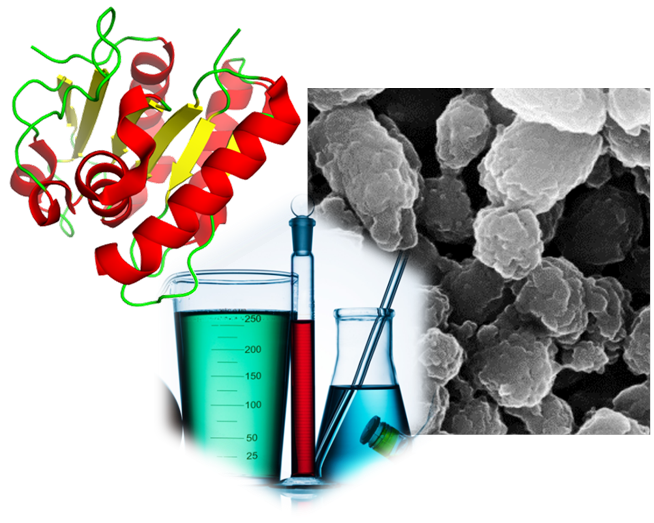Results
Catalytically-active inclusion bodies (CatIBs) represent a very promising new form of biologically produced enzyme immobilisate for application in both lab-scale synthetic chemistry and industrial biotechnology, which due to their simple and cost-efficient production contribute to the sustainable management of resources. The method relies on the molecular biological fusion of a coiled-coil domain to a target protein, which upon expression of the gene fusion in Escherichia coli results in the formation of large amounts of CatIBs. The BOOST FUND project CatIBs aimed at establishing and optimizing a generic strategy for the production of CatIBs by i) broadening the repertoire of enzymes/proteins available as CatIBs (partner IMET, HHU), ii) evaluating and optimizing their production conditions (partner AVT, RWTH), and iii) evaluating their potential for application in biocatalysis (partner IBG-1, FZJ). During the funding period, applicability of the CatIB strategy could be verified for six new proteins and enzymes of varying complexity. Thus, up to now CatIB formation could be successfully demonstrated for 10 different targets. Co-expression and co-localization studies revealed that two proteins/enzymes can be co-localized within CatIB particles, which facilitates the set-up of reaction cascades, further improving the resource economy of the respective processes. Induction/growth temperature was identified as a decisive parameter for the production of CatIBs. Whereby lower induction temperatures are apparently required to enable the production of IB particles retaining (catalytic) activity (CatIBs). To facilitate those studies, a temperature profiling system for 48 deep-well Flowerplates was built, which enables the parallel cultivation and online monitoring of strains grown at different defined temperatures. Furthermore, a generic protocol for the production of CatIBs was established, which enables the routine production of up to 10 g CatIBs from 100 g wet E. coli cells. To evaluate the biotechnological application of CatIBs, they were tested in different enzyme reactor setups (enzyme membrane reactor, plug-flow reactor) revealing increased stability of CatIB preparations compared to the respective soluble enzyme preparations. CatIBs of the lysine decarboxylase from E. coli (EcLDC) were utilized for the production of cadaverine (1,5-diaminopentane) in cell-free culture supernatants of a Corynebacterium glutamicum L-lysine producer, employing technically relevant reaction conditions. High product titers and space time yields were achieved, which renders the CatIBs-based process competitive with the currently best fermentative process described in literature.

Participating Core Groups
Coordinator
Dr. Ulrich Krauss
Institute of Molecular Enzyme Technology,
Heinrich-Heine-University Düsseldorf
Forschungszentrum Jülich
Tel.: +49 2461-61-2939
Fax.: +49 2461-61-2490
email: u.krauss@fz-juelich.de
Partners
Prof. Dr. Karl-Erich Jaeger, Dr. Ulrich Krauss, Institute of Molecular Enzyme Technology (IMET), Heinrich-Heine-University Düsseldorf and IBG-1: Biotechnologie, Forschungszentrum Jülich
Prof. Dr. Jochen Büchs, AVT-Biochemical Engineering, RWTH Aachen University
Prof. Dr. Wolfgang Wiechert, Prof. Dr. Martina Pohl, IBG-1: Biotechnologie, Forschungszentrum Jülich
Project duration
01.01.2015 – 31.12.2017
Funding
CatIBs is part of the NRW- Strategieprojekt BioSC and, thus, funded by the Ministry of Innovation, Science and Research of the German State of North Rhine-Westphalia.
Publications
Krauss, U, Jager, VD, Diener, M, Pohl, M and Jaeger, KE (2017). Catalytically-active inclusion bodies-Carrier-free protein immobilizates for application in biotechnology and biomedicine. J Biotechnol 258: 136-147.
Diener, M, Kopka, B, Pohl, M, Jaeger, K-E and Krauss, U (2016). Fusion of a coiled-coil domain facilitates the high-level production of catalytically active enzyme inclusion bodies. ChemCatChem 8(1): 142-152.